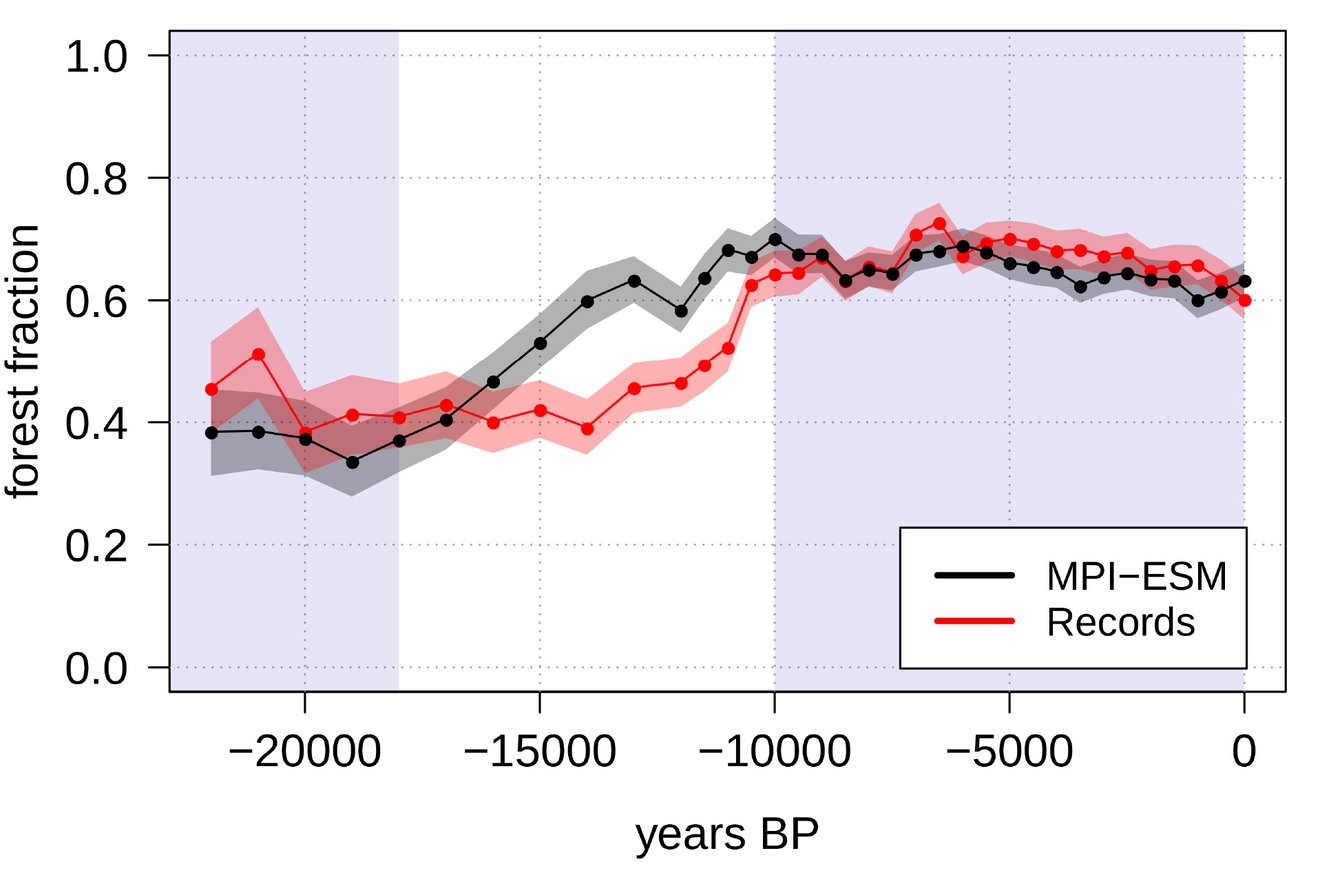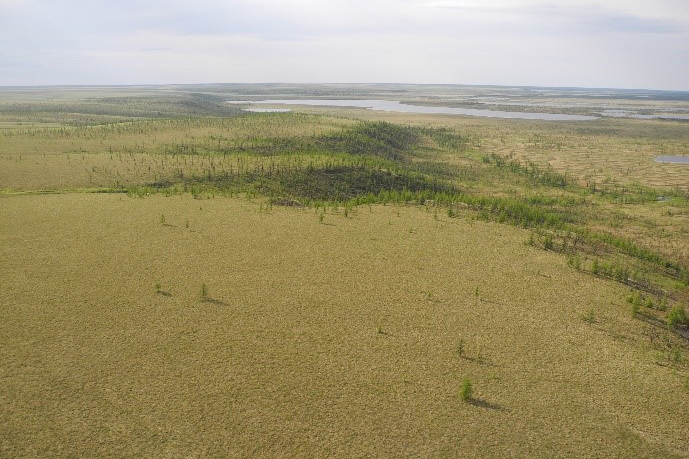The conundrum of forest expansion after the last ice age
The authors of the study — Anne Dallmeyer, Thomas Kleinen, Martin Claussen (Max Planck Institute for Meteorology und CEN, Universität Hamburg) and researchers from the Alfred-Wegener Institute, University Potsdam, University Heidelberg, University Tübingen, and the Chinese Academy of Sciences — have shown that the climate simulated by the Earth system model MPI-ESM1.2 is consistent with pollen-independent climate reconstructions for the last 22,000 years. Thus, possible biases in the simulated climate are not the main driver of the model-data discrepancy. The assignment of individual plant genera to different macro-ecosystems is not straightforward. It relies to some extent on subjective and individual choices, which may lead to uncertainties in the reconstructions. The main reason, however, may be the fact that the simulated vegetation follows the simulated climate within decades and is thus in quasi-equilibrium with the climate on the analyzed time-scale, while the real forest has to migrate from one region to others. This migration involves in turn slow ecological processes such as the development of soils on bare rocks that have been exposed during the deglaciation. These processes that slow down the migration of forest are so far not implemented in Earth system models. Both the direct response of the vegetation to a changing climate in the model and the slow migration processes of individual tree species imply that the discovered model-data mismatch points at a multi-millennial disequilibrium of the Northern Hemisphere forest dynamic and a changing climate. The mismatch is particularly pronounced in Asia.

The consequences of the model-data discrepancy are twofold. Pollen records are still the most wide-spread terrestrial archive for climate and vegetation reconstructions and are commonly used to evaluate the performance of Earth system models for past climate states, also based on time-slice experiments. If the disequilibrium is real, the usage of pollen records for model validation should be critically reassessed. Second, the results by Dallmeyer et al. imply that Northern Hemisphere forests may be responding much slower to ongoing climate changes than Earth system models predict. This is a major source of uncertainty in the prediction of how climate change will affect changes in forests and biodiversity.
The study was conducted as part of the BMBF-funded PalMod project and the CLICCS cluster of excellence.
Original paper:
Dallmeyer, A., Kleinen, T., Claussen, M., Weitzel, N., Cao, X. & Herzschuh, U. (2022). The deglacial forest conundrum. Nature Communications, 13: 6035. doi:10.1038/s41467-022-33646-6
Contact:
Dr. Anne Dallmeyer
Max Planck Institute for Meteorology
anne.dallmeyer@mpimet.mpg.de
Prof. Dr. Martin Claussen
Max Planck Institute for Meteorology
martin.claussen@mpimet.mpg.de
Dr. Thomas Kleinen
Max Planck Institute for Meteorology
thomas.kleinen@mpimet.mpg.de

